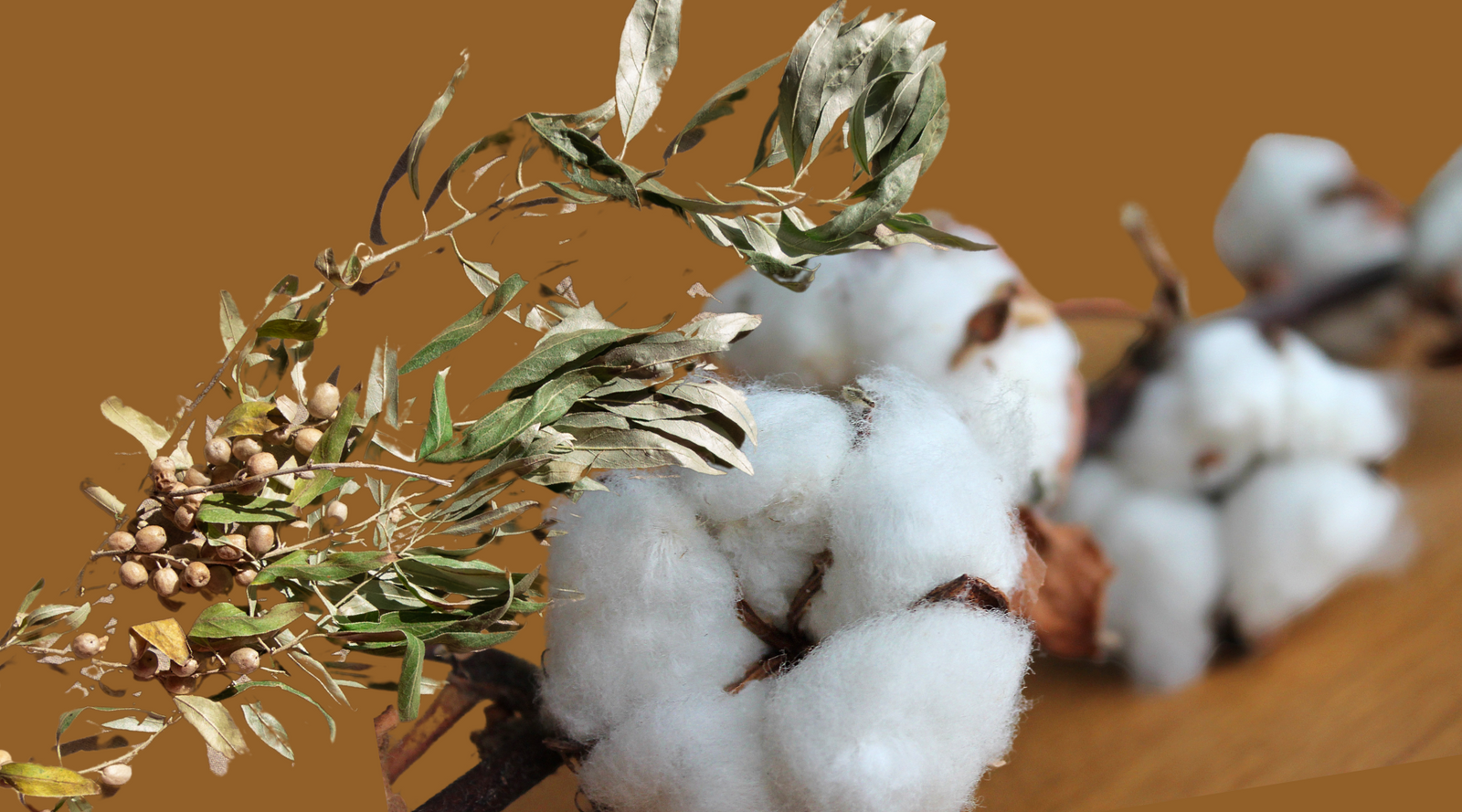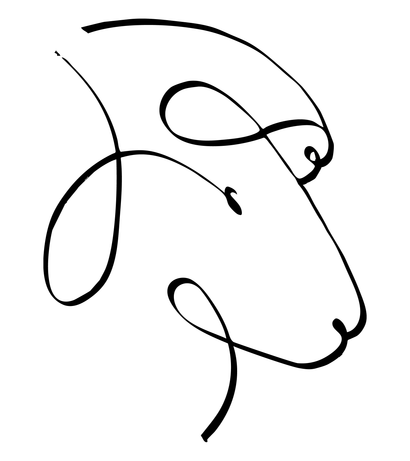Free shipping on all domestic orders over $150
Free shipping on all domestic orders over $150
Shop
Add description, images, menus and links to your mega menu
A column with no settings can be used as a spacer
Link to your collections, sales and even external links
Add up to five columns
Add description, images, menus and links to your mega menu
A column with no settings can be used as a spacer
Link to your collections, sales and even external links
Add up to five columns

Are Linen Blend Yarns good? Exploring the pros and cons
June 03, 2024 5 min read 1 Comment
It’s June, and this warm weather has me thinking about summer yarns—especially linen blend yarns. For summer, 100% linen is great to wear—linen pants, dresses, and shirts are beautifully breathable and moisture-wicking, but knitting with 100% linen is not always the most fun.
Linen yarn can be stiff, and knitting or crocheting with it can be hard on the hands. And let’s face it, if it’s no fun to knit, I’m probably not going to do it. While I am on a mission to create a hand-knit wardrobe, at the end of the day, it’s still a hobby. If it’s not fun, it stops being a hobby and starts being a job—and who needs that?
Fortunately, linen is a great partner for other fibers in yarns that are fun to knit and fabulous to wear, and that’s what we’re all about here at Crazy for Ewe. So, let’s take a look at some beautiful blends that not only make beautiful fabric but a beautiful experience.
TLDR: Linen is great for summer but can be tough to knit with. Blending it with other fibers, like cotton or silk, makes it more comfortable and versatile. Linen/cotton blends are cool, comfortable, and easy to care for. Cotton/wool blends offer softness and elasticity. Silk adds luster and drape.
What Linen Brings to the Yarn
Pros of Linen:
- Durability: 100% linen is incredibly strong and durable, making garments last for years.
- Breathability: Air passes easily through linen fabric, keeping you cool and comfortable.
- Absorbency: Linen can absorb up to 20% of its weight, keeping moisture away from your skin.
- Natural Sheen: Linen has a beautiful, natural sheen that creates a lustrous fabric.
Cons of Linen:
- Initial Stiffness: Linen yarn can be quite stiff and rough on the hands. The yarn softens a bit as you work it, but that initial stiffness can be quite challenging.
- Cost: Linen is an expensive fiber, so 100% linen tends to be a pricey yarn.
- Poor Stitch Definition: Stitches in linen yarns don’t nestle together, so they don’t showcase dense complicated stitch patterns.
What Cotton Brings to the Yarn
Pros of Cotton:
- Softness: Cotton is one of the softest fibers that gets softer with each wash and wear.
- Absorbency: Cotton is even more absorbent than linen, with the ability to absorb up to 27 times its weight without feeling wet.
- Good Stitch Definition: Cotton yarns look good at all gauges and in most stitch patterns.
Cons of Cotton:
- Dye Color: Cotton yarns are less reflective, so their colors tend to be a little softer and more muted than other fibers.
- Weight When Wet: Cotton is absorbent, and it tends to stretch and sag when it’s wet. You need to run cotton garments through a spin cycle for sure, and through the dryer to bring them back to shape. Always treat your swatch as you plan to treat your sweater to be sure!
What Silk Brings to the Yarn
Pros of Silk:
- Luster: There is nothing more lustrous than silk—it brings a luminosity to everything it touches.
- Dye Absorption: Silk drinks dye greedily, giving yarn an unparalleled depth of color and vibrancy.
- Moisture Evaporation: Silk is less absorbent than cotton or linen; however, moisture evaporates very quickly from silk fabric, giving it a lovely cooling effect.
Cons of Silk:
- No Recovery: When you knit with 100% silk yarn, it will stretch when you wash it. A lot. Best to know this up front and either account for it in your gauge or just have it dry cleaned.
- Cost: Silk is lovely, but it's expensive.
- Sunlight Damage: Sunlight can cause silk to yellow and become brittle. Blending with other fibers that are less sensitive to sun damage helps.
Cotton-Wool Blends
Pros:
- Softness and Warmth: The combination of cotton and wool results in a yarn that is soft and warm, making it suitable for a variety of seasons.
- Elasticity: Wool adds elasticity to the yarn, making it easier to work with and more forgiving than 100% cotton.
- Durability: Wool adds strength and durability to the yarn, helping garments maintain their shape over time.
Cons:
- Care: Cotton-wool blends may require special care to prevent shrinking or felting, depending on the wool content.
- Weight: Depending on the ratio, the yarn can be heavier than pure cotton or wool, which might affect the garment’s drape.
Knitting Experience:
Knitting with cotton-wool blends is generally pleasant, as the wool adds elasticity and softness, making the yarn more forgiving and easier to work with than pure cotton. It’s a versatile choice for a range of projects, from lightweight sweaters to cozy shawls.
Fabric Characteristics:
The fabric from cotton-wool blends is soft, warm, and slightly elastic, making it comfortable to wear in various seasons. It’s ideal for transitional pieces like cardigans, lightweight sweaters, and cozy accessories.
Linen Blend Yarns
The addition of other fibers, like cotton and silk, really enhances linen yarn. Cotton softens the linen, making it much more pleasant to knit with from the start. Both linen and cotton are breathable fibers, but the combination of cotton’s absorbency with linen’s moisture-wicking characteristics makes sweaters from these yarns super cool and comfortable all year long. The cotton gives better stitch definition, making these yarns more versatile for all patterns and projects.
Silk gives linen a beautiful luster and hand that is beyond compare.
Here are a couple of my favorite linen blend yarns:
Rowan Creative Linen
This worsted weight 50-50 blend of linen and cotton is pleasant to knit with great stitch definition. It looks beautiful in everything from open knit fabrics like my Lizzie, to densely patterned cabled sweaters. Cool and comfortable, affordable, and easy care. What more could you want?
Kelbourne Mojave
A 60/40 cotton/linen blend in sport/dk weight, Mojave is a wonderful breezy yarn. Mojave has an impressive and vibrant color palette. Lightweight and comfortable to wear with great stitch definition and beautiful drape and juicy summer colors.
Queen City Coleman
This luxurious 65/35 blend of silk and linen is truly the queen of summer yarns, and knitting with it is pure joy. With that hefty portion of silk, Coleman has beautiful drape and luminous color. The linen gives it just enough structure to make it relatively easy care and keep the silk from stretching out of shape. It has a wonderful hand, terrific stitch definition, and a beautiful sheen making. Honestly, it is perfect not just for summer, but for all year-round garments.
I’d love to know your thoughts—have you knitted with any of these yarns? Tell me in the comments.
Warmly,
Ellen


Tyral Spence
June 04, 2024
As you’ve heard Rogers Arkansas was hit with several tornadoes the last Saturday of May and were hit with one large branch landing parallel to our home.We had a bag of ice in freezer which saved our meat.I called a vet and they said to call shelters which I did and while they were taking care of meat I looked on their display and saw an Australian Shepherd Lasso and mutual love at first sight.Good comes out of every experience.